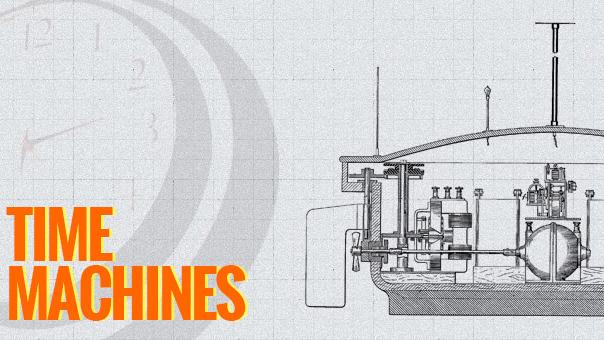thomas edison
Latest

A quick spin through turntable history
Compact discs were once the wave of the future, but their sales have flagged whereas vinyl records have seen a resurgence, leaving pressing plants overbooked and struggling to keep up with demand. Sure, most people are getting their daily dose of beats from streaming-music services these days, but if you're looking for a rich analog sound with plenty of space for artwork and liner notes, vinyl's where it's at. Since the medium's attracted a new generation of listeners, we've decided to look back at some of the interesting players over the years. Some of which are as unique and varied as the music stamped into the vinyl. [Image: Roy Harpaz industrial design]
Jon Turi07.18.2015
Tesla's toy boat: A drone before its time
Welcome to Time Machines, where we offer up a selection of mechanical oddities, milestone gadgets and unique inventions to test out your tech-history skills. The military complex has certainly embraced the concept of telerobotics, especially in the use of drones, but luckily the technology has also led to other, more peaceful applications. Drones have been used to entertain, take on laborious tasks and even deliver packages (and burritos!). As we pursue the development of remotely controlled and autonomous craft, we must tread carefully or suffer the same fate as the fabled Icarus. Nikola Tesla saw both the terrible as well as the beneficial consequences for this technology when he debuted the "remote control" and the jury is still out as to whether we'll succumb to a dystopian Terminator-style future or reach a peaceful stasis, where we harness the usefulness of robots and autonomous devices, and avoid the worst-case scenarios.
Jon Turi01.19.2014
Auto-tune this! Research team restores 134 year-old audio recording (update: audio links)
A Berkeley Lab research team in California has successfully restored a 134 year-old audio recording. The historic audio was originally captured in 1878 by a phonograph designed by Thomas Edison, which consisted of a cylinder wrapped in tinfoil that used a stylus to record sound on the surface of the material. Due to the foil's frailty, recordings were only good for a few playbacks on Edison's phonograph. To restore this century-old mixtape, the research team created a 3D model of the grooves in the foil and ran it through a software that recreated the original audio track. As for the great mystery of the recording's contents, it's a 23-second horn instrumental followed by what is believed to be political writer Thomas Mason reciting Mary Had a Little Lamb and Old Mother Hubbard. Using modern technology for playback, the restored recording is set to have a listening party this week at the Museum of Innovation and Science in New York. Update: For audio samples from the project, hit the coverage link below. [Image courtesy of the Library of Congress, Brady-Handy Photograph Collection]
Mark Hearn10.25.2012
Ubiquitous nanotubes could reboot Edison-era nickel-iron battery technology
Back in the 1920s, Thomas Edison's dream of an electric automobile was ultimately foiled by those meddling petroleum engines. But thanks to nanotube research from Stanford University, one legacy from that era may regain some glory: nickel-iron batteries. It turns out that carbon nanotubes doped with nickel and iron crystals can top up the normally slow-charging cells in a matter of minutes -- according to the scientists, that's almost 1,000 times faster than in the past. Although the batteries couldn't power your Volt or Prius due to a lack of energy density, they could give an extra jolt to their lithium-ion siblings for quicker starts and regenerative braking. The researchers are working on improving stability to allow more charging cycles, but it might be an extra in-your-face for Edison if it pans out.
Steve Dent06.28.2012
GE's early 20th century pallophotophone recorder decoded, Thomas Edison speech uncovered
In 1922, General Electric developed a machine for recording audio called the pallophotophone, which recorded sound on 35mm film. It is thought to be the world's first multitrack recording system (and it predated magnetic tape multitrack recording by about 20 years). The device never really made it to the big time, however, and until very recently, almost no one bothered to think about it anymore. Then Chris Hunter, curator of the Schenectady Museum in Schenectady, New York discovered 12 canisters of the film in his archives. Though none of GE's original pallophotophone machines seem to have survived, current GE engineer Russ DeMuth became involved in the project, and spent two years building a modern pallophotophone based on GE's original sketches, out of modern materials, dubbing the new one the Gizmotron. The modern device plays the original films just fine, and included in their canisters were a couple of real gems -- what's thought to be the earliest recording of the NBC chimes, and a speech given by Thomas Edison commemorating the 50th anniversary of the invention of the incandescent lightbulb. A photo of the modern Gizmotron and its inventors is below -- hit up the source for the full story and hear the Edison audio.
Laura June Dziuban06.20.2010
